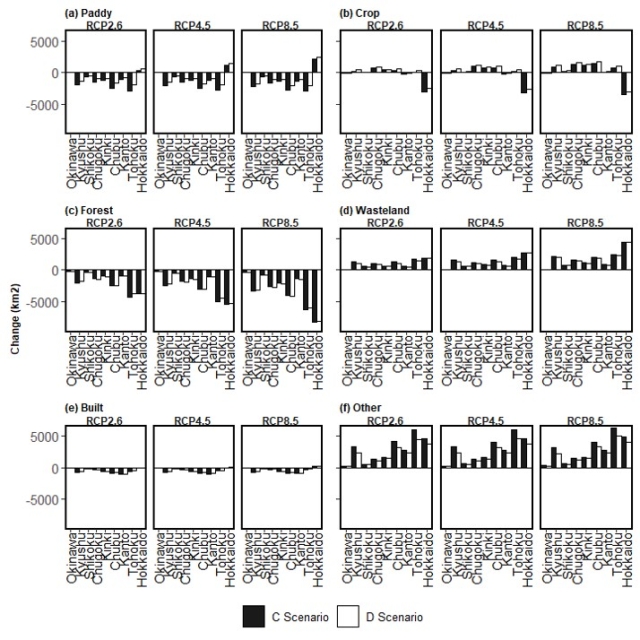Information of Paper
Author:Tomohiro Fujita, Toshinori Ariga, Haruka Ohashi, Yasuaki Hijioka, Keita Fukasawa
Year:2019
Journal: Climate Research Vol. 79: 139–149
Link to the paper
Keywords
Demographics, Random forest, Land-use change, Paddy
Abstract
Projecting land-use changes can help with identifying potential threats to biodiversity and ecosystem function, thus mitigating impacts on human livelihoods. We examined changes in 6 land-use categories in Japan: paddy fields, croplands, forests, wastelands, built-up areas, and other artificial land cover. Land-use changes were projected to the year 2100 while considering effects from climate and population change. We developed regression models to project proportional changes in land-use areas using predictors derived from a previous dataset. Using these models, we projected future trends of each land-use type under alternative climate and population change scenarios. Our results revealed that, in Japan, climate change is likely to have a greater impact on croplands, forests, and wastelands, whereas population change has more influence on paddy fields, built-up areas, and other artificial land cover. For example, proportional changes in forest area did not vary much among population change scenarios but differed substantially among climate change scenarios. In contrast, proportional changes in the areas of paddy fields did not vary much among climate change scenarios but differed greatly among population change scenarios. Our results also indicated that land-use changes can vary by region. Although the total area of paddy fields decreased nationally by the year 2100, paddy field area was projected to increase in Hokkaido, especially under the scenario of high greenhouse gas emissions (an increase of 2228 km2, +95.7%). Our study confirms that climate and population change will affect future land-use changes in Japan.





